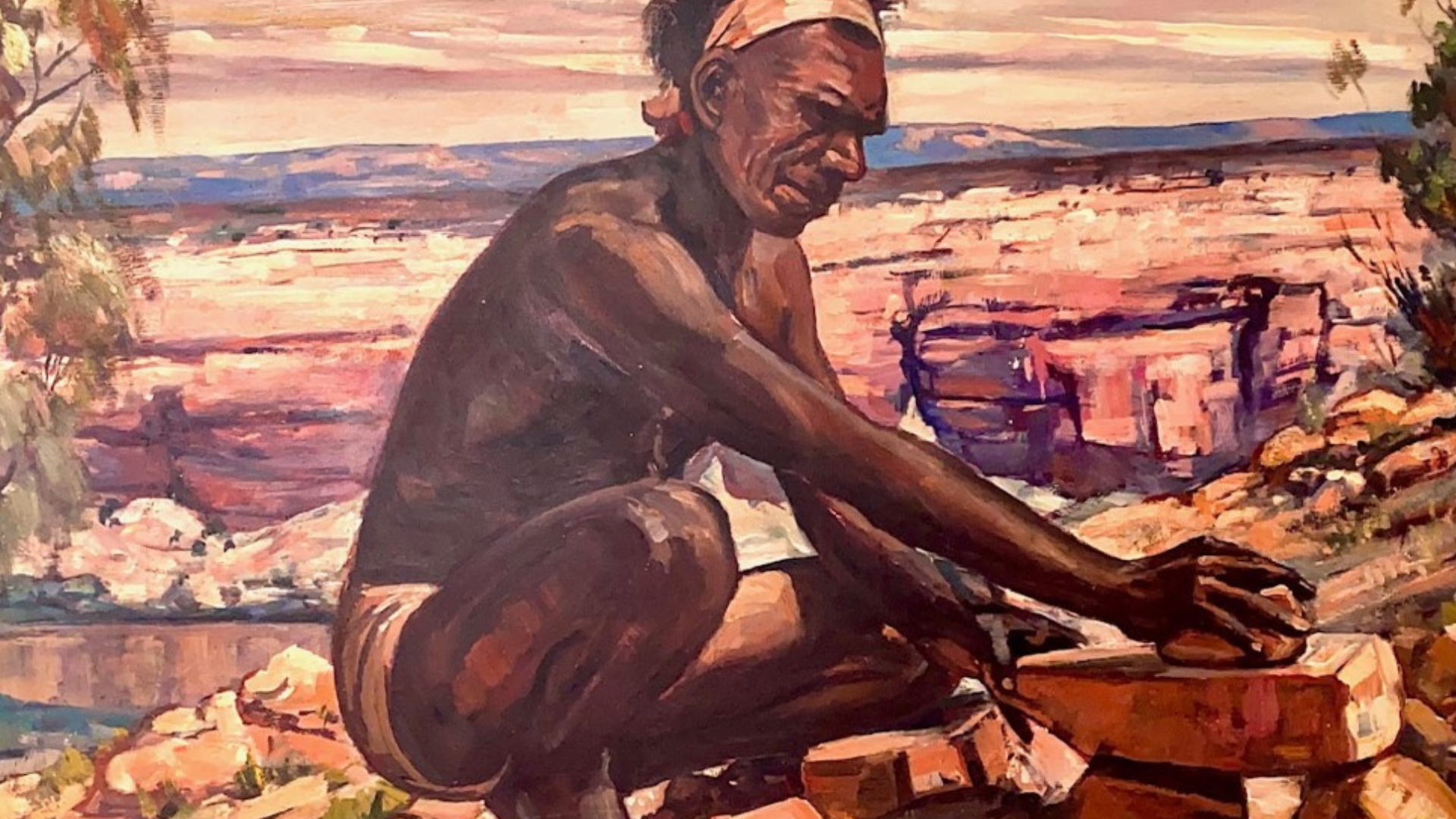Vlase Zanalis, born on the Greek island of Kastellorizo in 1902, embarked on a life’s odyssey that transcended continents and cultures. His story unfolds as a testament to his profound artistic exploration and his lasting impact on the intersections of Greek heritage, Australian landscapes, and Indigenous themes.
In 1914, Zanalis migrated to Western Australia, marking the beginning of his creative voyage. While he achieved national recognition with “The Birth of a Nation” in 1934, it was his post-1948 work that would define his legacy, immersing him in the Australian landscape and its Indigenous narratives.
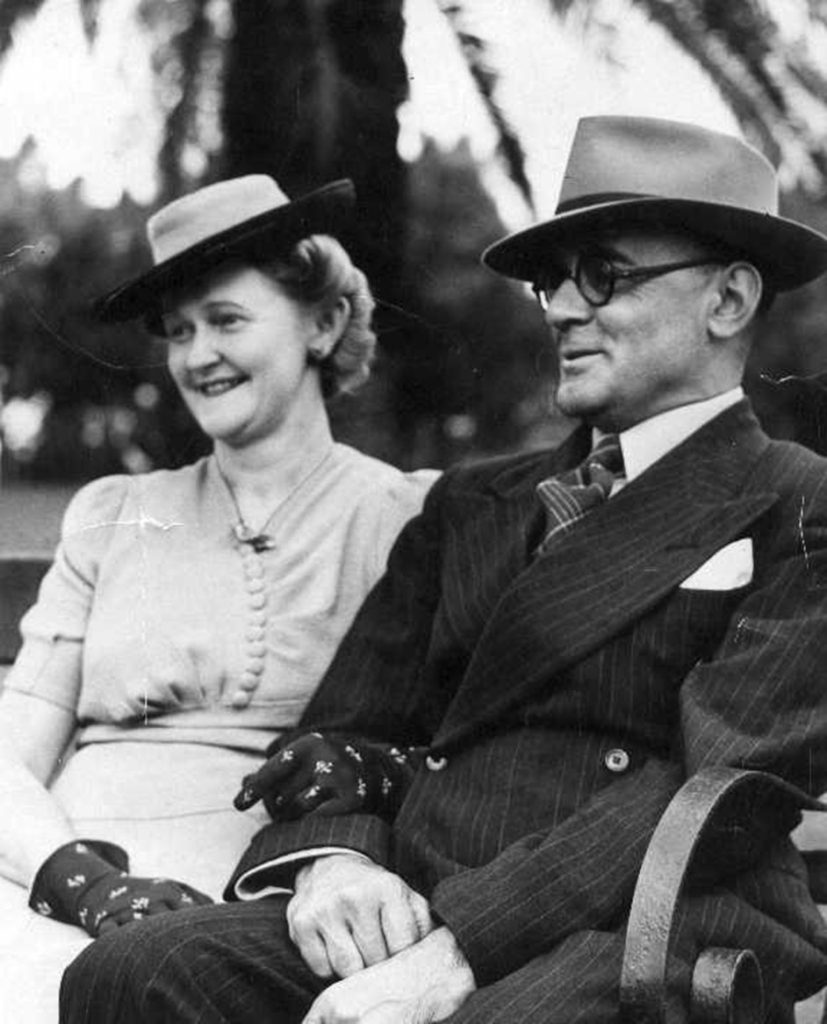
Zanalis’ artistic odyssey is closely intertwined with the tapestry of Greek culture in Australia. His brushstrokes left an indelible mark on Greek Orthodox churches across the nation. His iconic iconography adorned places of worship in Queensland, New South Wales and Western Australia, etching his name into the hearts of Greek Australians. Beyond ecclesiastical works, his art captured the sweeping vistas of Australia’s natural splendour. His canvases revealed the contrasting red earth and pale trees of the Pilbara, the rugged majesty of Central Australia, and the enchanting character of the Kimberley.
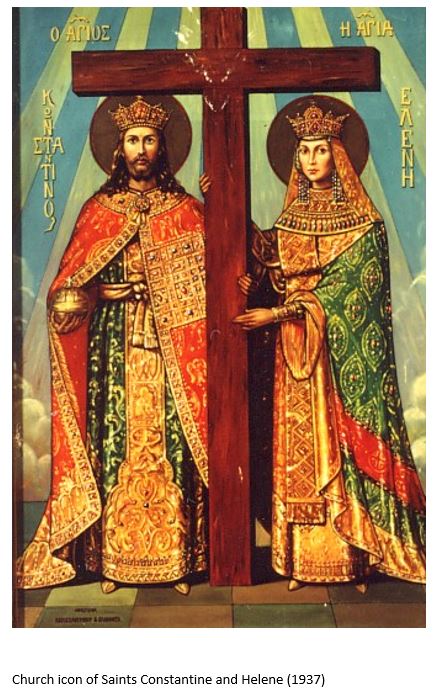
A pivotal point emerged in his career when he immersed himself in Aboriginal culture. This transformative encounter, beginning with his visit to Forrest River Mission in the East Kimberley in 1949, ignited a 20-year fascination with Indigenous themes. He became a pioneer in valuing and portraying the depth of Indigenous Australian culture, a profound shift in the artistic landscape.
Zanalis’ artwork echoed the spirits of the land and its people. His depictions of the outback and Aboriginal subjects drew inspiration from his encounters with fringe life in Darwin, visits to Kimberley cattle stations, and his engagement with Western Australian missions. Baobab trees, ancient sentinels of the Kimberley, found their place in his art, weaving history and nature into his brushstrokes.
A remarkable aspect of Zanalis’ work lies in his understanding of Aboriginal spiritual iconography. He ventured into remote areas, uncovering the symbolic art adorning sheltered cliff walls. His paintings depict a sense of reverence and respect- a bridge between cultures and beliefs.
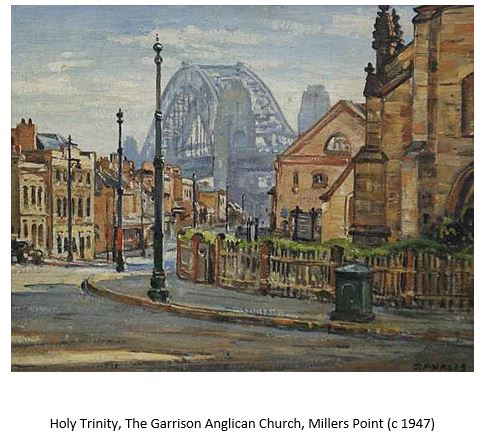
Zanalis’ lifework stands as a tribute to the dignified Indigenous Australians he portrayed. He merged elements of classical Greek culture with their portrayal, evoking the grace and strength reminiscent of ancient Olympian gods.
In 1967, Zanalis recorded his reflections on his Aboriginal Memorial Collection, a culmination of 88 paintings dedicated to preserving the life and customs of a fading way of life. His commitment and passion shone through, a testament to his enduring artistic journey.
With Zanalis’ passing in 1973, Australia lost a dedicated artist, a friend to the northern Aborigines, and a pioneer who bridged cultures through his canvas.
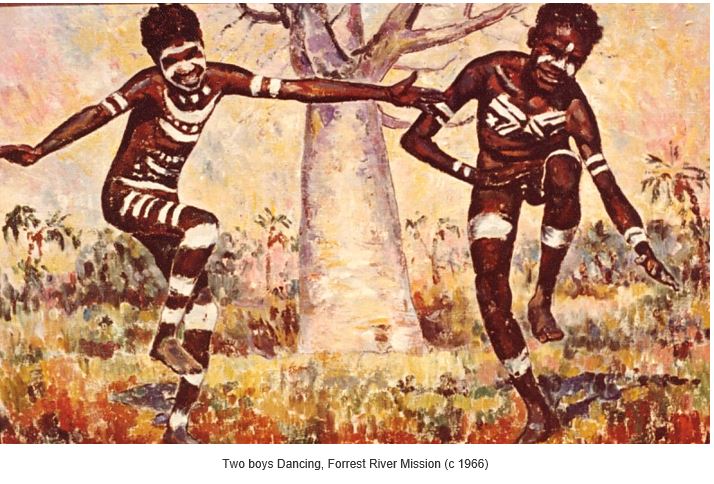
His legacy lives on through the research of historians like Dr John Yiannakis and Dr Neville Green, who unveiled his life’s narrative in “Vlase Zanalis: A Greek Australian Artist” (LaTrobe University, 2003). Professor George Kanarakis also paid homage to Zanalis in his book, “In the Wake of Odysseus: Portraits of Greek Settlers in Australia” (1997), reinforcing the enduring impact of his cultural and artistic work.
Zanalis’ art serves as a timeless bridge between Greek heritage, Australian landscapes, and Indigenous culture. For information into the life and works of this visionary artist, a treasure trove of knowledge awaits in the writings of these esteemed researchers.

For further insights into this remarkable artist, please reach out to Dr John Yiannakis OAM at his website https://www.drjohnyiannakis.com/ for contact details.
Information on Vlase Zanalis also appears on the GAAD (Greek Australian Artist Directory) https://gaclmelbourne.com/g/project/vlase-zanalis/
Initiated by the Greek Australian Cultural League (GACL), the GAAD was designed to celebrate Greek Australian artists, serving as a platform to showcase their exceptional artwork and contribution to the Australian arts landscape. By preserving and promoting the artistic legacy of Greek Australian artists, past and present, the GAAD ensures that their talents are duly acknowledged and cherished.
Interested artists can register their profiles by visiting www.gacl.com.au and clicking on the dedicated GAAD section.
For any inquiries related to the GAAD, please reach out to GACL President Cathy Alexopoulos at 0428 968 715 or GAAD Co-ordinator Vasy Petros 0412 242 557.
*Written by Vasy Petros. This is a Greek Australian Cultural League Initiative supported by The Greek Herald.
